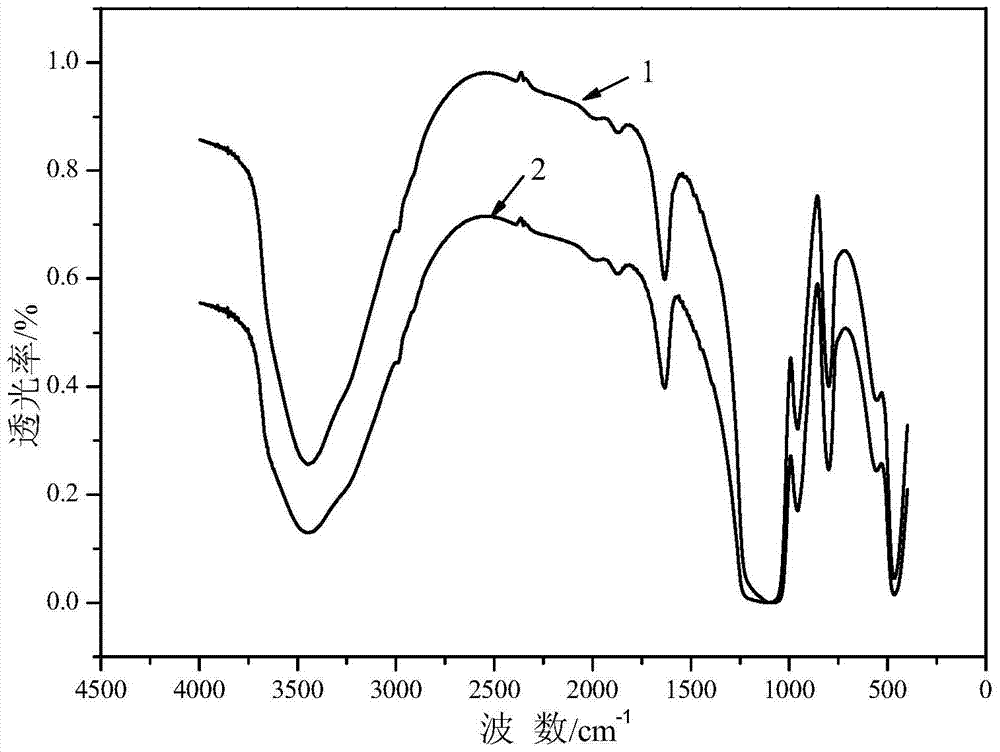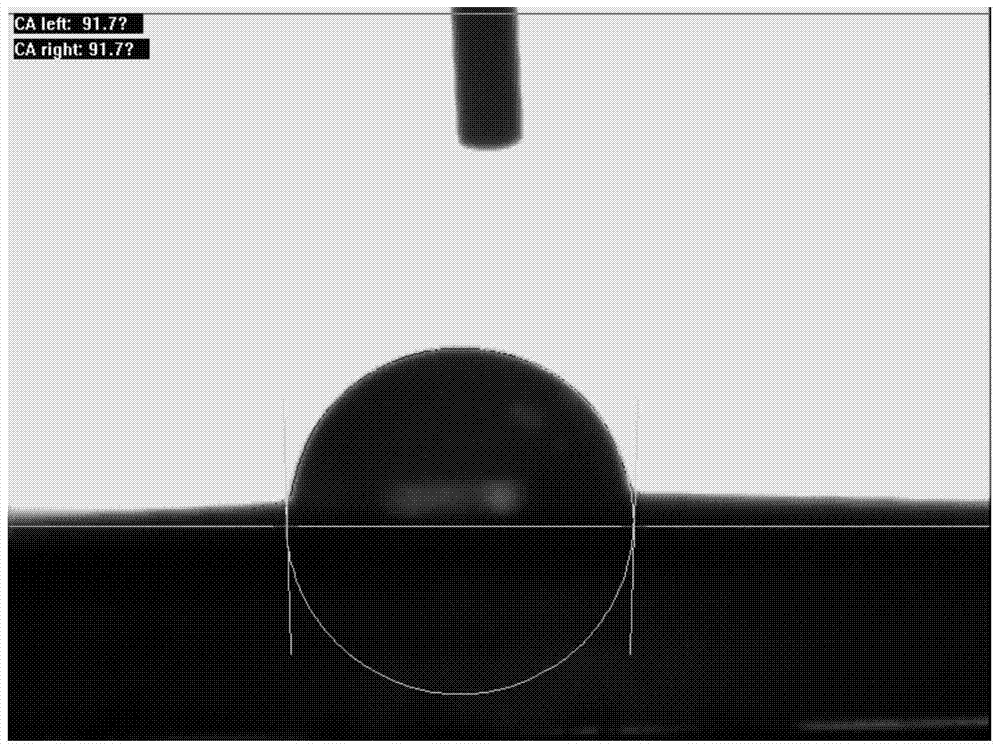Chemical resistant superhydrophilic and underwater superoleophobic oil-water separation membrane and its preparation and application
A super oleophobic oil and chemical resistance technology, applied in the field of oil-water separation membrane preparation, can solve the problems of poor performance, poor water resistance and chemical resistance, achieve fast speed, good chemical resistance, and expand the scope of use Effect
- Summary
- Abstract
- Description
- Claims
- Application Information
AI Technical Summary
Problems solved by technology
Method used
Image
Examples
Embodiment 1
[0057] (1) Put a piece of 15×15mm 2 The 300-mesh stainless steel wire mesh was immersed in distilled water, ethanol or acetone, and distilled water in order, respectively, and ultrasonically cleaned at 150W and 40KHz for 8min, and hung up to dry at room temperature.
[0058] (2) Add 50g of tetraethoxysilane, 100g of absolute ethanol and 20g of deionized water into a four-neck flask, heat in a constant temperature water bath at 35°C and keep stirring. After stirring evenly, weigh 0.5g of 25% Add ammonia water to 30g of deionized water, drop it into a four-necked flask at a rate of 1mL / min with a constant flow pump, keep warm for 4 hours, and discharge to prepare a nano-silica sol with a particle size of about 10nm, with a mass content of nanoparticles of 20%. The structure of the synthesized nanoparticles was tested by a Fourier transform infrared tester. figure 1 The infrared spectrum is visible at 3400cm -1 There is a strong absorption peak at , which is the absorption peak...
Embodiment 2
[0067] (1) Put a piece of 15×15mm 2 The 100-mesh copper wire mesh was immersed in distilled water, ethanol, and distilled water in order, respectively, and was cleaned at 100W and 20KHz for 10min, and hung up to dry at room temperature.
[0068] (2) Add 50g of tetramethoxysilane, 100g of absolute ethanol and 20g of deionized water into a four-necked flask, heat it in a constant temperature water bath at 80°C and keep stirring. After stirring evenly, weigh 0.5g of 25% Add hydrochloric acid to 30 g of deionized water, drop it into a four-necked flask at a rate of 1 mL / min with a constant flow pump, and discharge after 4 hours of heat preservation to prepare a nano-silica sol with a particle size of 500 nm and a mass content of nanoparticles of 35%. The structure of the synthesized nanoparticles was tested by a Fourier transform infrared tester, and the obtained structure diagram was consistent with that of figure 1 resemblance.
Embodiment 3
[0075] (1) Put a piece of 15×15mm 2 The 200-mesh aluminum wire mesh was immersed in distilled water, ethanol or acetone, and distilled water in order, respectively, and ultrasonically cleaned at 150W and 40KHz for 10min, and hung up to dry at room temperature.
[0076](2) Add 50g of tetramethoxysilane, 100g of absolute ethanol, and 20g of deionized water into a four-neck flask, heat in a constant temperature water bath at 35°C and keep stirring. After stirring evenly, weigh 0.5g of 25% Add sodium bicarbonate to 30g of deionized water, drop it into a four-necked flask with a constant flow pump at a rate of 1.5mL / min, and discharge after 5 hours of heat preservation to prepare a nano-silica sol with a particle size of 200nm, and the mass content of the nanoparticles is 35%. . The structure of the synthesized nanoparticles was tested by a Fourier transform infrared tester, and the obtained structure diagram was consistent with that of figure 1 resemblance.
[0077] (3) Dilute ...
PUM
 Login to View More
Login to View More Abstract
Description
Claims
Application Information
 Login to View More
Login to View More - Generate Ideas
- Intellectual Property
- Life Sciences
- Materials
- Tech Scout
- Unparalleled Data Quality
- Higher Quality Content
- 60% Fewer Hallucinations
Browse by: Latest US Patents, China's latest patents, Technical Efficacy Thesaurus, Application Domain, Technology Topic, Popular Technical Reports.
© 2025 PatSnap. All rights reserved.Legal|Privacy policy|Modern Slavery Act Transparency Statement|Sitemap|About US| Contact US: help@patsnap.com



